On January 15, 2009, US Airways Flight 1549 made an emergency water landing in the Hudson River — and all 155 people onboard survived.
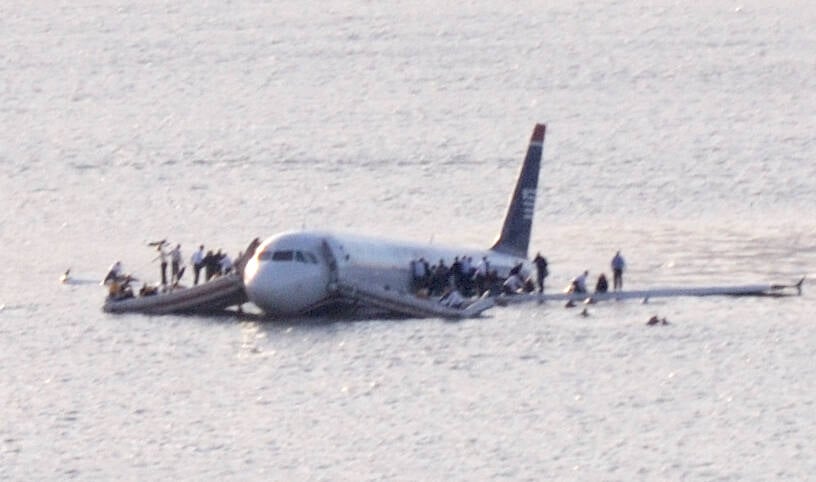
Greg Lam Pak Ng/FlickrA photo of the Miracle on the Hudson, taken shortly after US Airways Flight 1549 crash-landed in the Hudson River. \
On a January day in 2009, countless New Yorkers glancing out their windows saw an alarming sight: a low-flying passenger plane over the Hudson River. It was not terrorism, as some may have feared. Instead, it was an aircraft in deep distress. The Airbus A320 had catastrophically hit a flock of geese shortly after takeoff and was about to attempt a landing in the river that would soon become known as the Miracle on the Hudson.
Disaster had struck right after US Airways Flight 1549 took off from LaGuardia Airport. With both of the plane’s engines severely damaged by the bird strike, pilot Chesley Burnett “Sully” Sullenberger III and his first officer Jeffrey Bruce “Jeff” Skiles raced to figure out what to do. Though they briefly wrestled with the idea of returning to LaGuardia, or landing at New Jersey’s Teterboro Airport, it soon became clear that they didn’t have time.
“We’re gonna be in the Hudson,” Sullenberger told air traffic control.
Then, the plane soared over the George Washington Bridge and glided down onto the waters below. Though some passengers and crew members were injured in the landing, everyone survived. As the plane floated in the water like a toy in a bathtub, ferries and emergency boats rushed to the scene.
“We’ve had a miracle on 34th Street,” New York’s governor, David A. Paterson, declared after Sully Sullenberger and Jeff Skiles were able to safely make the risky water landing. “I believe now we’ve had a miracle on the Hudson.”
Here’s what happened on that incredible day.
How An Unexpected Bird Strike Led To The Miracle On The Hudson
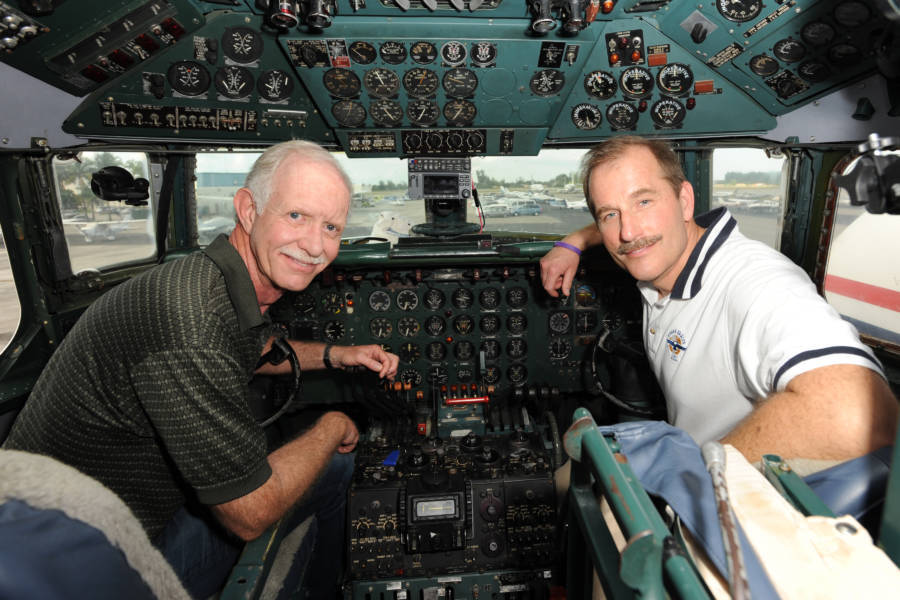
Larry Marano/Getty ImagesCaptain Sully Sullenberger and his first officer Jeff Skiles pose in the cockpit of an airplane.
At first, there was no sign of anything unusual about US Airways Flight 1549. On January 15, 2009, it took off from LaGuardia Airport in New York City at 3:25 p.m. It was supposed to land in Charlotte, North Carolina.
The plane was piloted by Chesley Burnett “Sully” Sullenberger III, a former military pilot with 20,000 flying hours under his belt, and co-piloted by Jeffrey Bruce “Jeff” Skiles, who had been with US Airways for more than two decades. The flight attendants, Donna Dent, Sheila Dail, and Doreen Welsh, were also seasoned crew members. Simple Flying reports that the three women had 95 years of experience between them.
After takeoff, the 150 passengers settled into their seats as the plane climbed higher in the sky. They surely anticipated nothing but an easy flight to North Carolina. Even the pilots seemed relaxed. As they soared up, Sullenberger commented, “What a view of the Hudson today.”
Then, disaster struck.
At 3:27 p.m., cockpit recordings captured Sullenberger saying, “Birds!” Then, Skiles exclaimed, “Whoa… Oh, shit!” As Simple Flying reports, the plane had hit a flock of Canada geese at a height of around 3,000 feet.

National Transportation Safety BoardA goose feather later found in one of the plane’s engines.
According to The Guardian, Sullenberger had hit birds three or four times in his career as a pilot, but on those occasions, the strikes hadn’t even dented the plane. This felt different. The whine of the engines sounded like a death rattle and the horrific smell of burning birds filled the cockpit. Then, a terrible silence fell as both the plane’s engines started to shut down.
“Mayday, mayday, mayday. This is Cactus 1539, hit birds,” Sullenberger told air traffic control as the plane fell at a dizzying rate of 1,000 feet per minute. “We’ve lost thrust in both engines. We’re turning back towards LaGuardia.”
But the pilot soon decided that a return to LaGuardia would be impossible. And US Airways Flight 1549 was quickly running out of time.
The Desperate Decision To Land On The River
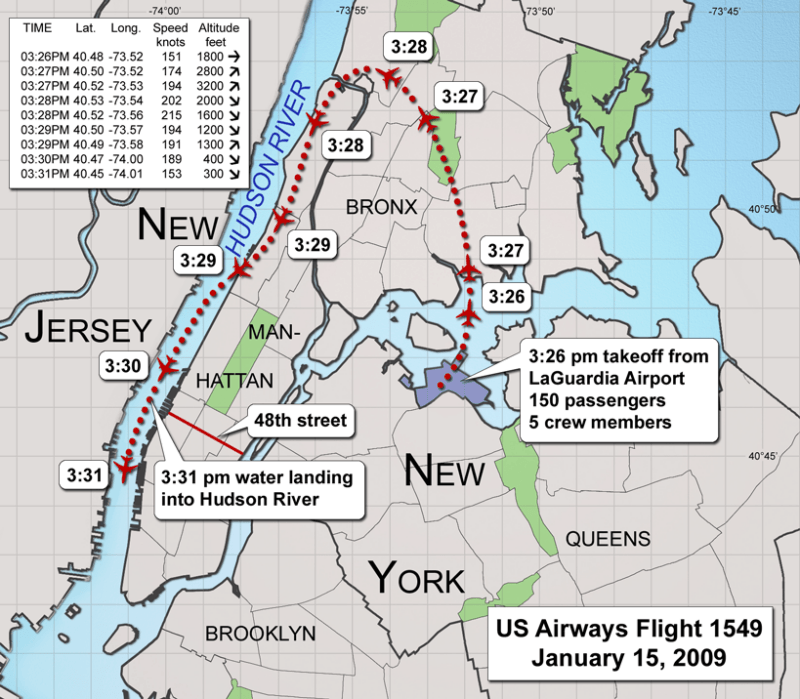
S. Bollmann/Wikimedia CommonsUS Airways Flight 1549 suffered a catastrophic bird strike shortly after takeoff on January 15, 2009.
Over the next three minutes and 32 seconds, Sully Sullenberger and Jeff Skiles scrambled to figure out what to do. At first, they thought they’d return to LaGuardia Airport. But they soon calculated that this would be impossible. Next, they asked air traffic control about landing at New Jersey’s Teterboro Airport. But they also believed that this option was just out of their reach.
“We’re gonna be in the Hudson,” Sullenberger told air traffic control, to which the shocked controller responded: “I’m sorry, say again?”
As the controller, Patrick Harten, later testified before Congress, he thought that the plane was going to catastrophically crash into the river.
“People do not survive landings on the Hudson River, and I thought it was his own death sentence,” Harten said, according to The New York Times. “I believed at that moment I was going to be the last person to talk to anyone on that plane alive… I asked him to repeat himself, even though I heard him just fine. I simply could not wrap my mind around those words.”

YouTubeNew Yorkers saw US Airways Flight 1549 flying low over the Hudson River right before it landed.
Meanwhile, the rest of the flight crew members were largely in the dark about the danger. Simple Flying reports that they heard a loud noise (the bird strike) and then silence (the engines failing) but weren’t sure what was happening. Dent and Dail thought that maybe a cargo door had swung open.
Then, Sully Sullenberger’s voice was heard over the intercom at about 3:29 p.m.: “This is the captain. Brace for impact.”
With that, the flight crew instantly leapt into action. The New York Times reports that they told the stunned passengers to keep their feet flat on the floor, put their heads down, and cover their heads.
“I prayed and prayed and prayed,” passenger Elizabeth McHugh later recounted to The New York Times. “Believe me, I prayed.”
As alarmed New Yorkers caught a glimpse of the low-flying plane, it glided at 900 feet over the George Washington Bridge. Then, at 3:31 p.m. — minutes after the bird strike — US Airways Flight 1549 landed on the Hudson River.
Inside The Miracle On The Hudson
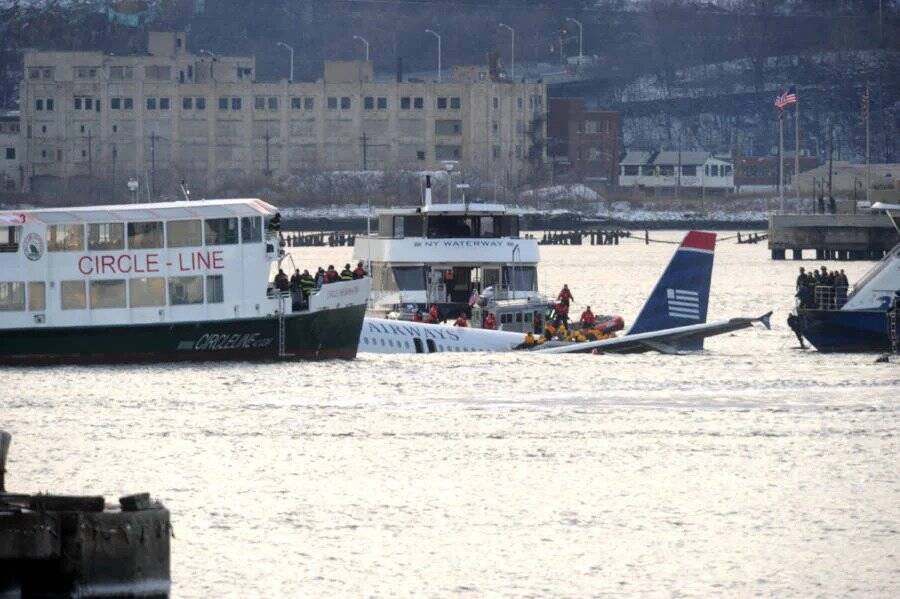
John Roca/NY Daily News Archive via Getty ImagesEmergency boats and ferries quickly made their way to the plane, evacuating everyone from the crash site in 24 minutes.
As The New York Times reports, landing a plane on the water is no easy feat. If pilots descend toward the water at too steep of an angle, it can break off the plane’s wings and send the aircraft to the bottom. And, unlike at an airport, there are no emergency crews on hand to help with the evacuation.
But Sully Sullenberger was able to execute a “hard landing” onto the frigid surface of the Hudson River, in an area that was approximately parallel to West 50th Street in Manhattan. New Yorkers who witnessed the landing recalled seeing a “huge, gigantic splash” and watching several ferries and other crafts making their way toward the plane, which was able to float on the water thanks to its fuel tanks, which weren’t full at the time.
Inside US Airways Flight 1549, Dent, Dail, and Welsh got to work evacuating the passengers. Water was filling the aircraft due to a rupture, and some passengers were climbing over seats to avoid the water, but overall, the evacuation went smoothly. One passenger, Jeff Kolodjay, called it “organized chaos.” He told The New York Times that the passengers “just walked through the water” to get to exits on the wings and emergency slides.
“It was incredible,” Dent later told CNN. “They did very well, a very educated group of travelers. I think that helped a lot. We had a lot of frequent fliers.”
Sullenberger, soaked to the waist, was the last person to leave the plane after he made sure that no one was left behind. Only then did he join the passengers and crew members, who were shivering outside in the winter cold. Fortunately, several nearby ferries and emergency boats had rushed to their aid. In 24 minutes, they were all safely removed from the crash site.
“I believe now we’ve had a miracle on the Hudson,” New York Governor David A. Paterson declared later that day, coining the memorable nickname for the successful ditching. “This is a potential tragedy that may have become one of the most magnificent days in the history of New York City agencies.”
Indeed, the world was astounded with the story of the Miracle on the Hudson. Everyone on the plane had survived, though some, like Welsh, had been seriously injured. Still, investigators started asking questions.
Did US Airways Flight 1549 Have To Land In The Hudson River?
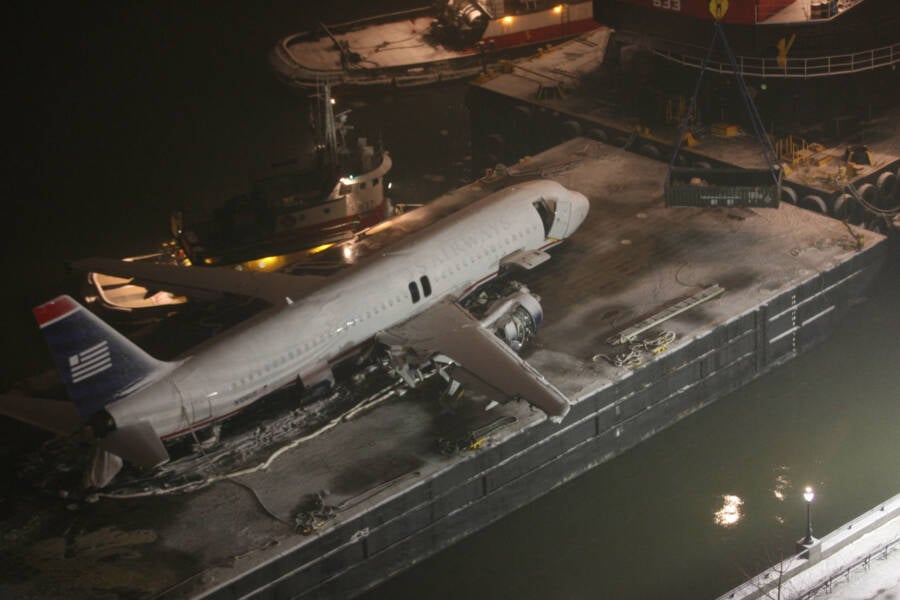
ZUMA Press, Inc./Alamy Stock PhotoIn the aftermath of the Miracle on the Hudson, the plane was pulled out of the river and an investigation was launched to see if it really needed to land there at all or if it could’ve hypothetically made it back to LaGuardia.
Soon after the Miracle on the Hudson, an investigation was launched by the National Transportation Safety Board (NTSB). They sought to find out if Sully Sullenberger had needed to land US Airways Flight 1549 in the river or if he could have flown back safely to LaGuardia or landed at Teterboro.
“The investigators from the NTSB were not there to be on my side,” Sullenberger later told The Guardian, acknowledging that he was “initially, very nervous” about their investigation. “Their purpose is to be on the side of truth and fact. They were going to follow that wherever it led. Our professional reputations were expendable. I was just an individual. I am sure they would have thrown me under the bus if necessary.”
In the end, the investigation found that Sullenberger could have made it back to LaGuardia — if he were a robot. Once they factored in a reaction delay, they surmised that Sullenberger had made the right choice. With this delay, the hypothetical landing at LaGuardia would not have been successful.
As such, Sullenberger and the crew members of US Airways Flight 1549 are seen today as rightful heroes. By following their instincts and relying on their years of training, they were able to execute a dangerous landing and successfully and safely evacuate all of their passengers.
“Once I knew my only option was the river, I stuck with it,” Sullenberger told The Guardian. “I didn’t waver. I knew it meant sacrificing the airplane. I knew people would be deciding whether what I did was right or wrong perhaps for decades. But that didn’t bother me. I didn’t let it interfere with what I had to do… I was flying the airplane and I was flying it well.”
After reading about the Miracle on the Hudson, see how a Florida man with no flying experience was able to land a plane after the pilot became incapacitated. Or, see how an amateur pilot named Thomas Fitzpatrick drunkenly landed a plane on a New York City street — twice.





